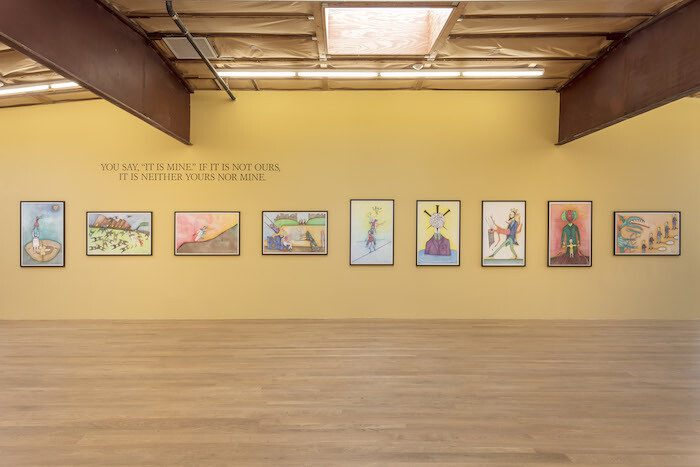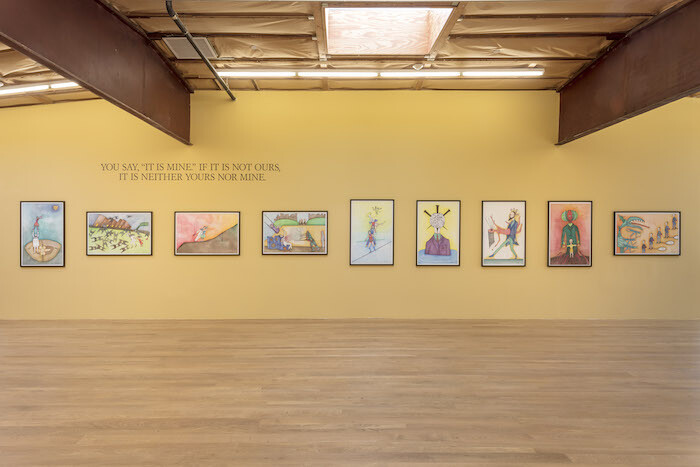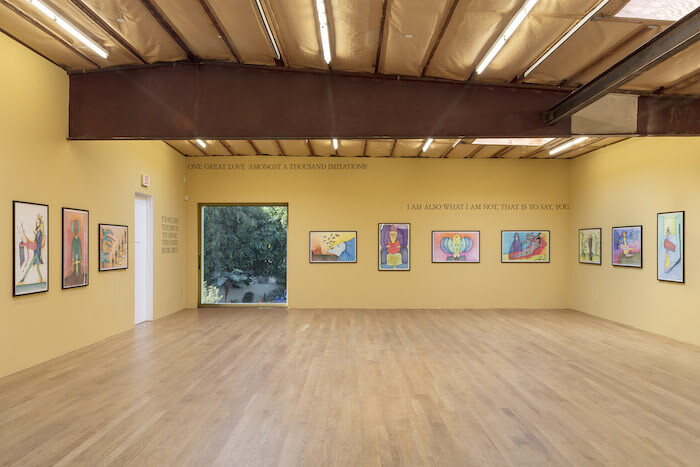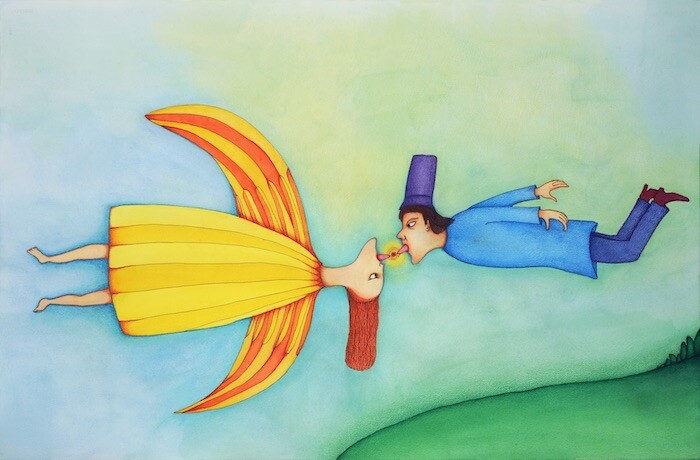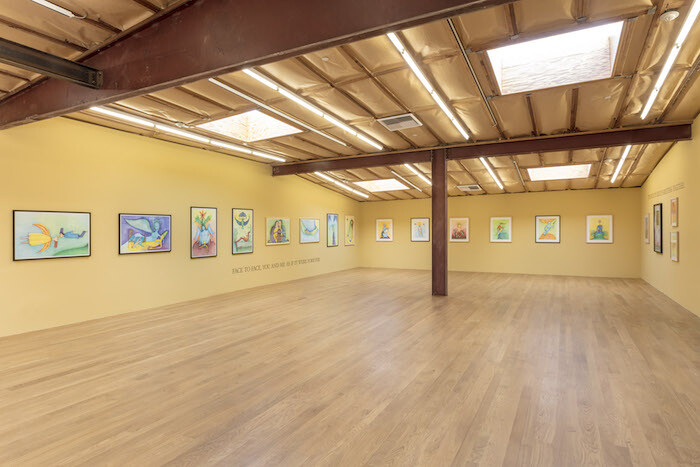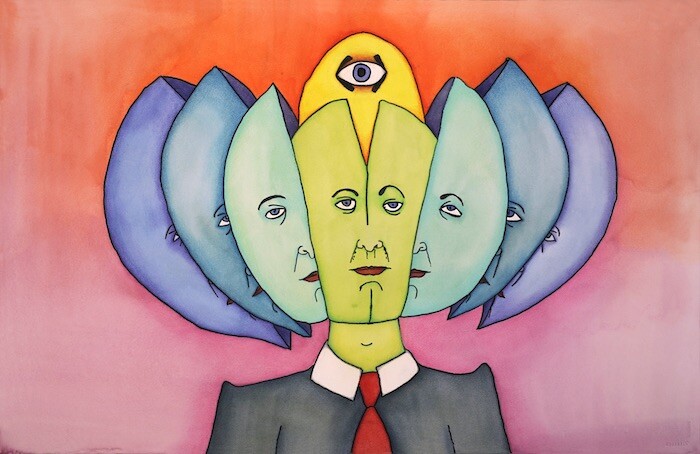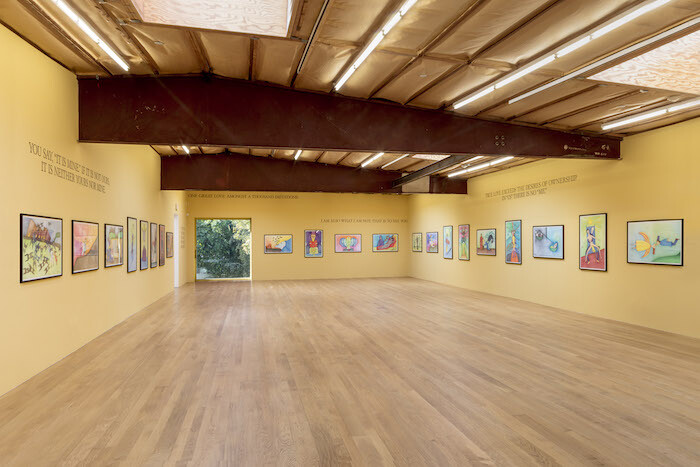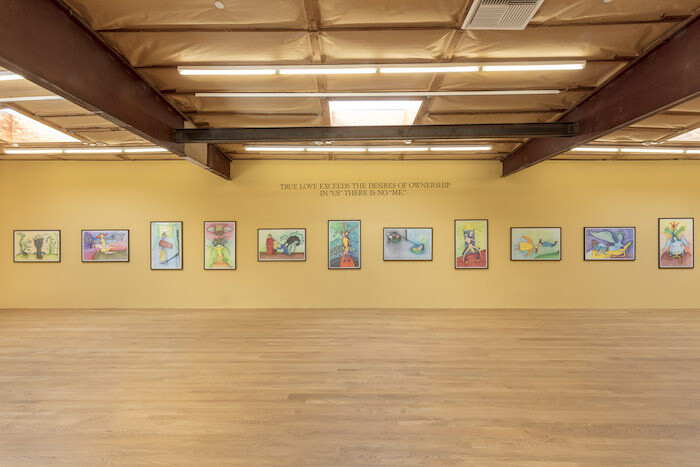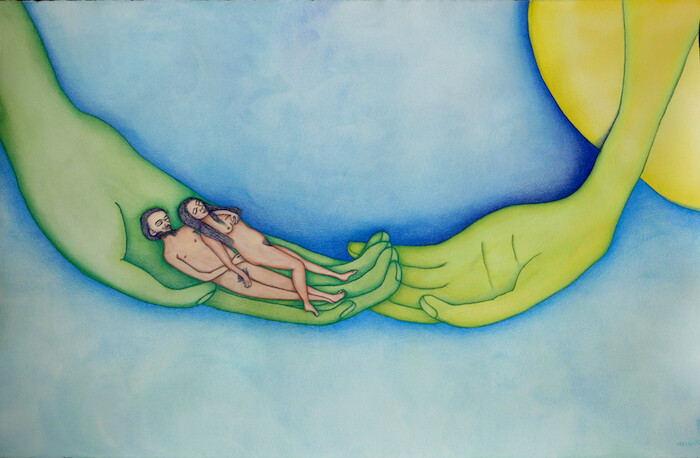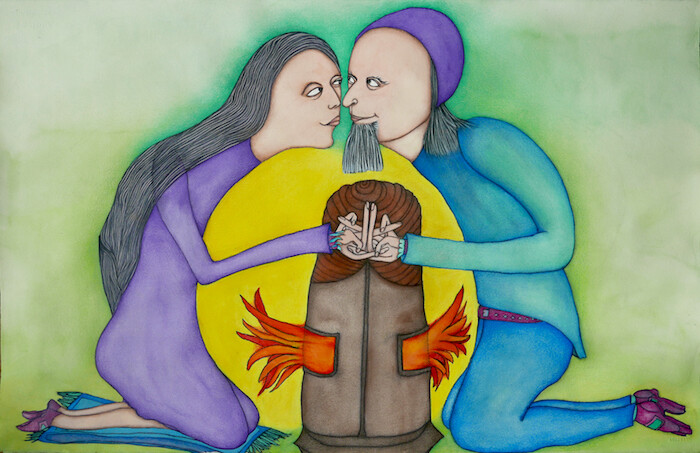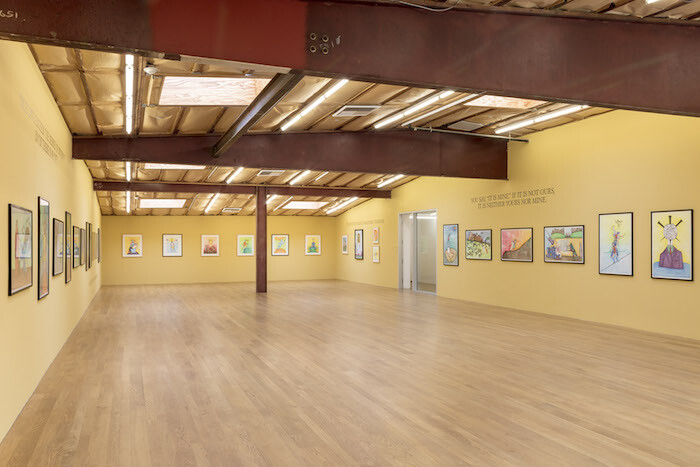For true mystics, there is no division between the real and the spiritual. The symbolic folds into our lives, shaping the world and us in it. The cool kiss of rain can be a curse or a blessing from the gods. Stumbling in the street en route to meet your lover might signal deeper misgivings and potential pratfalls of your coupling. Rather than a pseudoscience, astrology can, in tracking the paths of celestial bodies, chart our hidden natures. The card flourished from the tarot deck for many unveils the true shape and contour of a life: its past, present, and future. To practitioners and adherents of the esoteric, the interior and the exterior, the natural and the supernatural are one. “As above, so below,” to quote the legendary father of alchemy, Hermes Trismegistus.
Drawn by filmmaker Alejandro Jodorowsky and colored by costume designer/artist Pascale Montandon-Jodorowsky, the drawings that make up “Alchemical Love,” conceived and realized by this married couple (under the portmanteau of their two first names pascALEjandro), reveal a world of magical forces shaping their lives, a spirituality that weds the deeper mysteries to their love story. They are deceptively simple, each strange scene almost pulled from a children’s book with its simply drawn characters and bright, blushing colors (together making a curious echo of the Transavantgarde). I want to connect these drawings to Jodorowsky’s work as a filmmaker, where living actors play out magical visions, a mode where the mystical becomes indissoluble from the real. The tarot card and the human pulling it are connected; that symbolic language of the occult deck shapes and affects you in the same way that you have physically pulled the card from its shuffle. Here the couple forges a union of opposites, the male and the female, the beast that is born from their love, not a child per se as can often happen, but love as another kind of creature. Here, androgynous, a fusion they assert as true and complete, an artist with its own, original voice.
The two lovers (different in age by forty years) met over a tarot deck in Paris and thus, whatever your belief in the predictive properties of cartomancy, their lives were quite literally changed by the tarot. Jodorowsky’s book The Way of Tarot (2004, and co-authored with Marianne Costa) is not only a guide to its history and practice, but a work of literature, moving and daring in places as any novel, drawing from these complex symbols rich with interpretative meaning. I won’t say that pascALEjandro has developed a tarot, but rather a set of pictures informed by the occult card deck and a belief in the union of the physical and the spiritual, their lives shaping and shaped by their visions and dreams (a notion Jodorowsky has named “psychomagic”).1 In the drawing Essential Point (2016), a winged, redheaded woman dressed in shades of orange flies upside down over a green hill against an azure sky and touches her tongue with a man, top-hatted and besuited in blue, floating rightside up. At the point their tongues meet, a spark of fire. In the drawing made for the poster of Jodorowsky’s Poesia sin Fin [Endless Poetry] (2016), a businessman marches along the sea, a steamboat chugging on the distant horizon. His back to us, he clutches a suitcase firmly in his hand that from a gash in the back releases a kaleidoscopic flutter of butterflies. Otherworldly, these pictures invite interpretation, underlying meanings and potential intentions. Better yet, they invite a multiplicity of different readings. In Essential Point, why is the woman upside down and the man upright? What do such positions even mean in the weightlessness of the air? Perhaps the blue isn’t the sky, but a body of water, the curve of green a coastline and we are witness not to two lovers with one upside down, but rather their drifting on their sides as opposites coming together. The weightlessness and force of love, the spark of life between men and women that births life.
Despite their friendly colors, many of the pictures show viscerally strange events: a woman birthing a cat, two sword swallowers dancing in the pale blue hand of god, a many-fingered sunburst third eye emerging from the head of a saint on crutches, a naked blind man stuck through the stomach of a golden orange naked woman as she sits on the edge of a cliff, her red hair caught in the wind, her rouged eyes and smile open in laughter as she releases dozens of swallows from open horns formed where her hands ought to be, and other drawings too complex to succinctly describe. Looking at them purely as plainly drawn and brightly colored symbolic images, it’s hard to get past their simplicity. But imagining them as visions that translate to reality, as Jodorowsky has done through a long career as a filmmaker, they transform into something beyond mere pictures. Something raw and corporal, emotional and occult. Together, they capture the strange, magical, and really fucking messy nature of love.
The expression of love in art feels weirdly rare, and combined with their visceral strangeness, these works draw to mind a story from Jodorowsky found in The Way of the Tarot, where he relays the tale of meeting the great Surrealist artist Leonora Carrington: “Inviting me to eat a skull made from sugar with my name carved on its forehead, she told me: ‘Love transforms death into sweetness.’”
Alejandro Jodorowsky, Psychomagic: The Transformative Power of Shamanic Psychotherapy (Rochester, Vermont: Inner Traditions, 2010).
